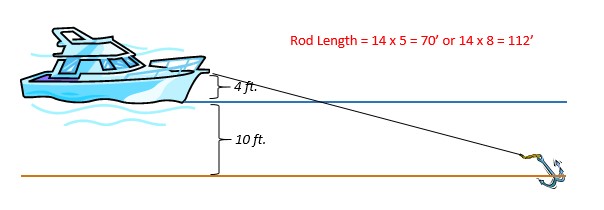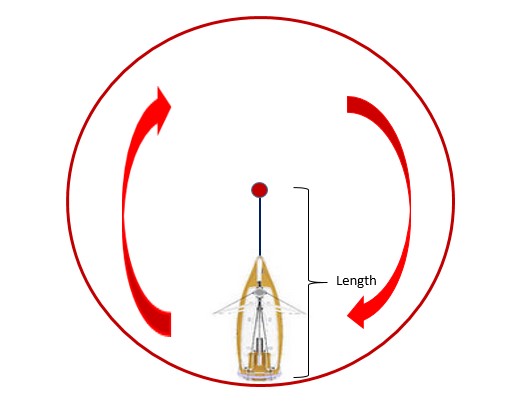At some point this summer, you may want to anchor your boat out in the water to swim, fish, have lunch or even stay the night. However, if you do not properly anchor your boat, your anchor will drag on the ocean or lake floor and your vessel will drift out of control, potentially running aground or slamming into the shore. Therefore, it is important that you choose the right anchor for your watercraft and apply the right steps to properly secure your boat.
Before you even think about anchoring your boat, you need to select the right anchor for your vessel. While there are a variety of anchors to choose from, the three types that are commonly used for most recreational boats are fluke, plow or mushroom anchors. These three anchors exhibited below vary in weight and size according to the scope of your vessel. For the most part, mushroom anchors are used for smaller or lighter boats, while many larger boats use fluke or plow anchors. To select the perfect anchor for your boat, we advise consulting a boating official or expert from your local marine store that is knowledgeable in choosing the perfect anchor design and size according to your boat’s specifications.
After picking the anchor design applicable to your boat, you then need to acquire a line source to attach your anchor to the boat. This line is commonly called the anchor rode or cable. Boaters commonly use chain, cable or rope to attach their anchor according to the size and weight of their vessel. To select the right anchor rode, we also suggest talking to a professional at a local marine store.
If you have the appropriate anchor, rode and shackles, you are now able to use your ground tackle or anchor configuration. However, before you just throw your anchor in the water, you need to understand the appropriate amount of rode to use depending on the water depth and weather conditions. The deeper the water and harsher the weather conditions, the more rode you put out. Generally, recreational boaters should have at a minimum 5 to 8 times the depth of the water plus the distance from the bow to the water surface. Thus, if the depth of the water is 10 feet and the distance from your bow to the surface of the water is 4, your rode length should be 70’ to 112’ long! Below is an illustration:

Now that you are knowledeable of the right rod distance to use, it’s time to learn how to anchor your boat using the steps below:
1. Choose the best area away from boat traffic and protected from wind and current.
2. This area should have enough room for your boat to swing if the wind changes. Think of the length of your anchor rode and boat as the length from the center of a circle to the outside of the circle. Your boat should be able to swing 360° without the stern of your boat hitting anything. In fact, you should add an extra 20 to 30 feet to this length to account for anchor drifting or slipping. Refer to the illustration below

3. Determine weather, current and bottom conditions to determine the amount of rod to put out.
4. If there are other vessels anchored around your boat, ask them for the length of their boat and rode to ensure you do not bump into them. You should also check with other boaters to see how they anchored as well.
5. Measure the amount of rod needed and cleat off the rod at that point.
6. Attach or rig the rod to the anchor and shackles securely. Double check to make sure everything is tightly fastened. You do not want to dive after your anchor!
7. Completely stop your boat and slowly lower your anchor to the bottom of the lake or ocean.
8. Once the anchor hits the ground, slowly reverse while letting the anchor rod out. When the anchor rod is tight, put your hand on the line to check if the anchor is set or dragging on the bottom. The rod will be vibrating if the anchor is dragging. If the line is not shaking it is set.
9. Once the anchor is set, pick a few reference points in the distance. If your reference points are moving over time, then your anchor is drifting on the bottom. Check every hour to ensure your boat is not drifting.
10. Once you’re done anchoring out, retrieve the anchor by pulling forward slowly until your anchor is vertical to the bow of your boat. Make sure to pull in the anchor rod as your moving forward. Once your boat moves past the anchor, the anchor should pull free allowing you to retrieve the it.
You are now an anchor setting pro! Anchor out and have a wonderful time on the water. Once you’re done, make your life a little easier by purchasing a Jet Dock floating boat lift to make docking and cleaning the grime off your boat a simple and stress-free process. We know you’ll be tired after your fun-filled ventures on the water!
By answering a few quick questions we will be able to tell you which dock or boat lift is the perfect fit for you.
Start Now! ▶